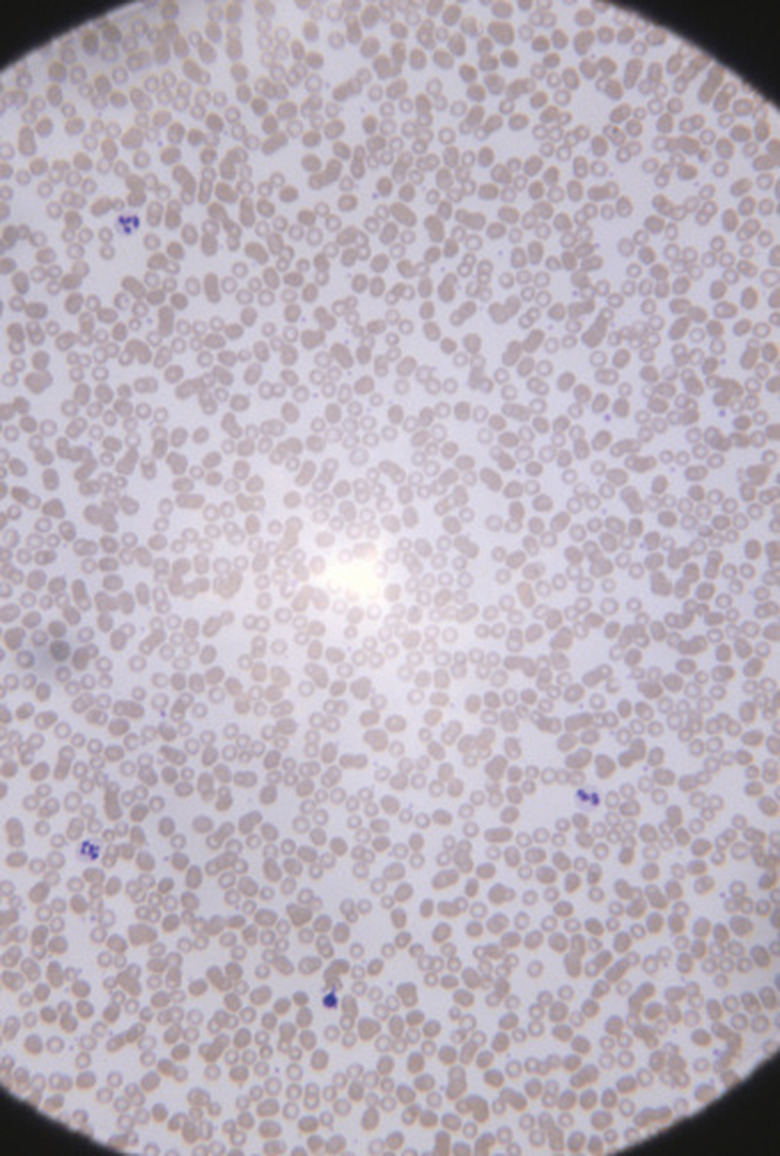What Happens To An Animal Cell When It Is Placed In A Hypotonic Solution?
The function of a cell is directly influenced by its environment, including the substances that are dissolved into its environment. Placing cells in different types of solutions helps both students and scientists understand cell function. A hypotonic solution has a drastic effect on animal cells that demonstrates important and distinctive properties of an animal cell and cell membranes.
Solutions
Solutions
A solution is a mixture of two or more substances and is composed of two parts, the solutes and the solvent. The solutes are the substances that are dissolved, and the solvent is the substance that the solutes are dissolved into. Solutions have an even distribution of solvents throughout the mixture. Solutions are compared to one another by describing them as hypertonic, isotonic or hypotonic. If a solution is hypertonic, it has more solutes relative to another solution. An isotonic solution has the same amount of solutes. A hypotonic solution has fewer solutes.
Osmosis
Osmosis
Osmosis refers to the movement of water through a selectively permeable membrane. A selectively permeable membrane is a membrane that only allows the passage of water molecules — not solutes or ions — through the membrane. In osmosis, water always moves from a solution with a low number of solutes to one with a high number of solutes. If a solution with a low number of solutes (hypotonic) is placed next to one with a higher number of solutes (hypertonic) and is separated by a selectively permeable membrane, the water would move from the hypotonic solution to the hypertonic solution due to osmosis.
Cell Membranes
Cell Membranes
Every cell has a membrane that covers the outside of the cell; it's called a plasma membrane. This membrane has numerous functions, including keeping the contents of the cell separate from the outside world, protecting the cell and moving substances in and out of the cell. These substances can be nutrients, wastes and water. Animal cells are different from those of other organisms in that they lack a cell wall, which is a rigid structure that both protects the cell and gives it shape.
Animal Cells in Hypotonic Solution
Animal Cells in Hypotonic Solution
Animal cells have a membrane that is differentially permeable. Similar to a selectively permeable membrane, a differentially permeable membrane only allows certain substances — including water, but not exclusively water — to pass through the membrane. An animal cell that is placed in a hypotonic solution will rapidly gain water, because osmosis would cause the water to move to an area with more solutes. In this case, that is the inside of the cell.
A cell in a hypotonic solution may gain enough water to lyse, or rupture, the cell membrane, which destroys the cell. Plant cells have some defense against this phenomenon because their cell walls prevent the cell from rupturing. Organisms that live in freshwater environments, which are usually hypotonic, often have mechanisms that help prevent cells from rupturing. This principle is often demonstrated with red blood cells, which have no mechanisms to defend against lysing.
Cite This Article
MLA
Leggett, Rochelle. "What Happens To An Animal Cell When It Is Placed In A Hypotonic Solution?" sciencing.com, https://www.sciencing.com/happens-cell-placed-hypotonic-solution-8631243/. 24 April 2017.
APA
Leggett, Rochelle. (2017, April 24). What Happens To An Animal Cell When It Is Placed In A Hypotonic Solution?. sciencing.com. Retrieved from https://www.sciencing.com/happens-cell-placed-hypotonic-solution-8631243/
Chicago
Leggett, Rochelle. What Happens To An Animal Cell When It Is Placed In A Hypotonic Solution? last modified March 24, 2022. https://www.sciencing.com/happens-cell-placed-hypotonic-solution-8631243/
